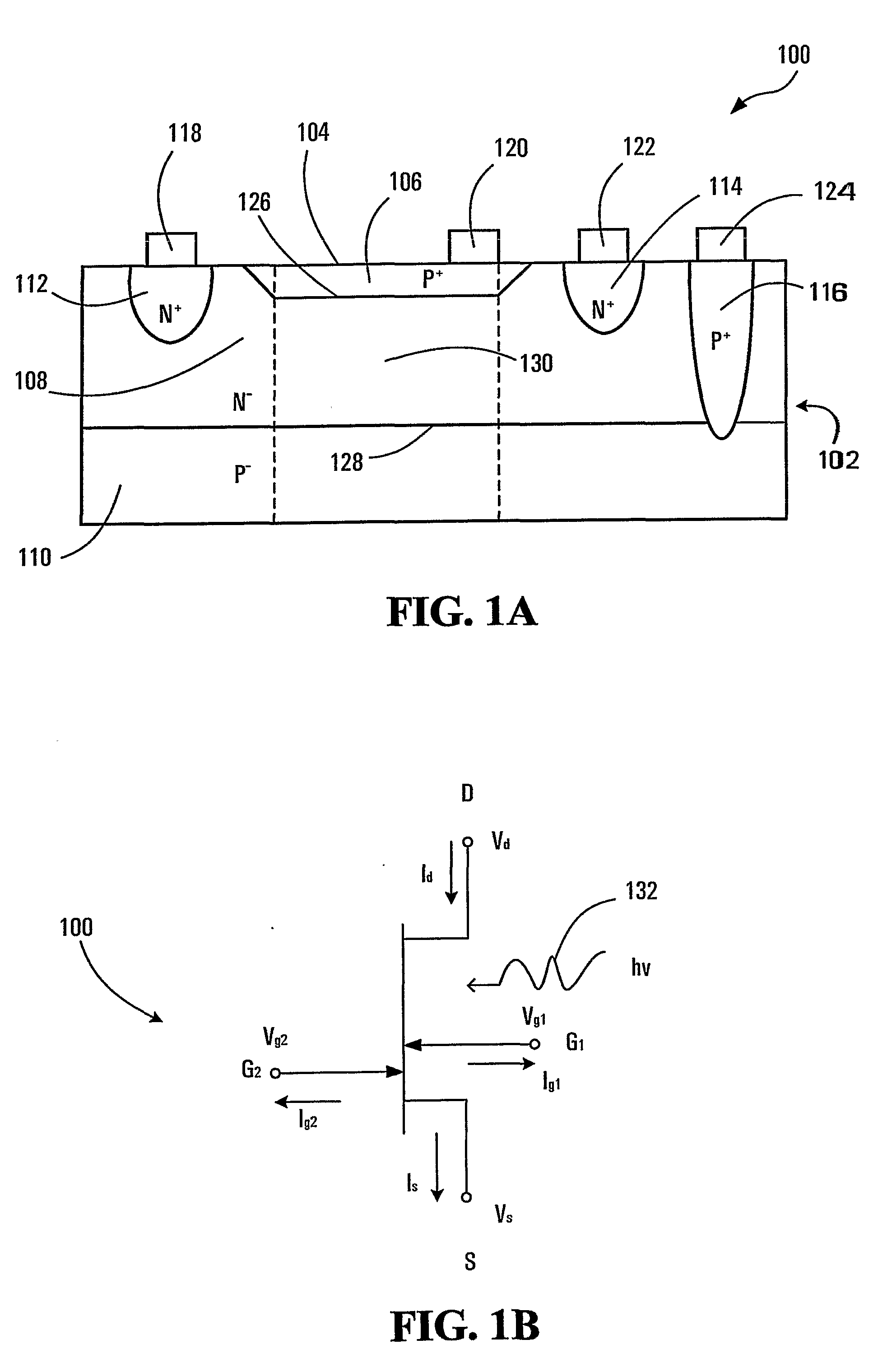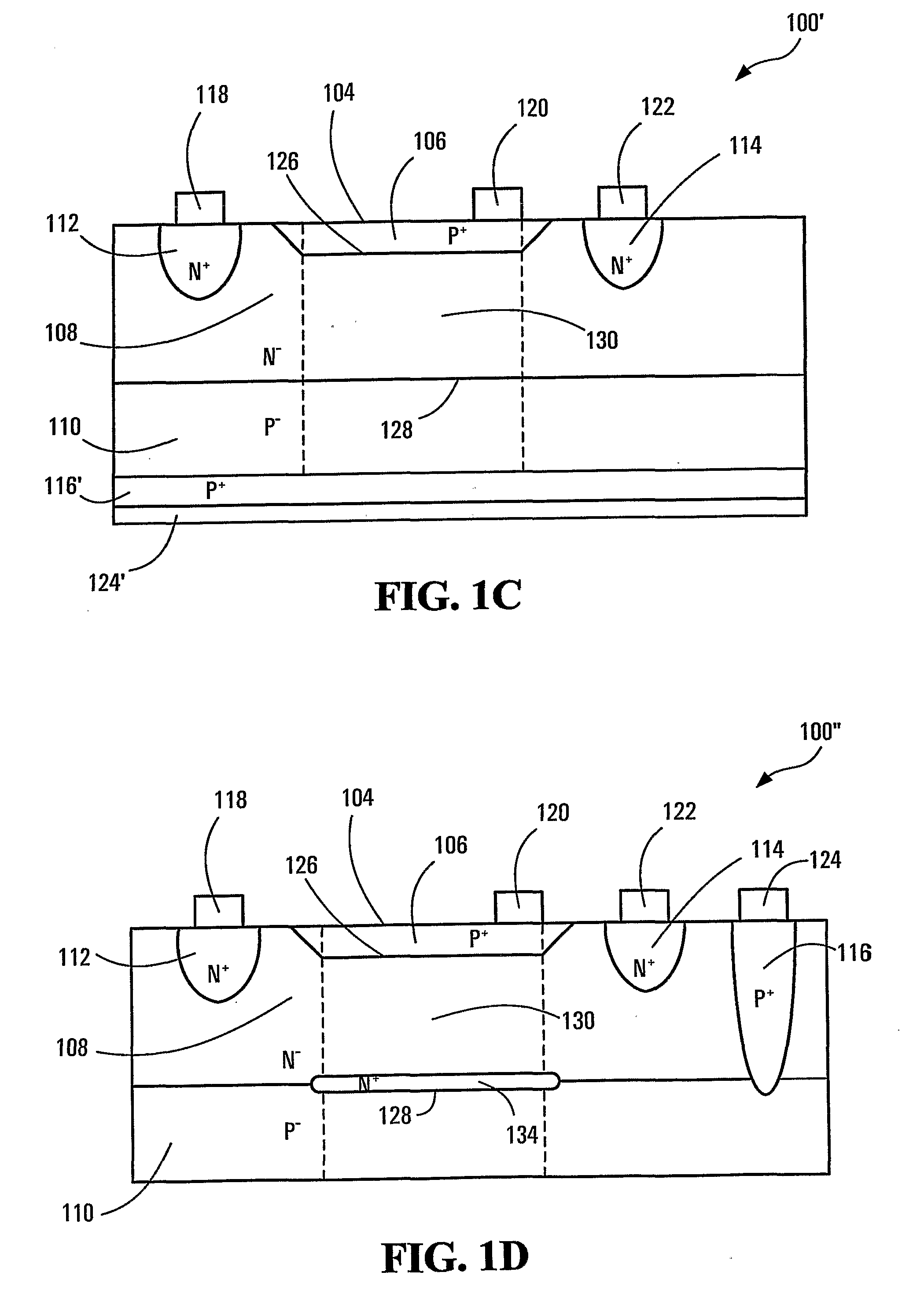Method and device for wavelength-sensitive photo-sensing
a wavelength-sensitive and photo-sensing technology, applied in the field of photo-sensing, can solve the problems of limiting the minimum size of each sensing unit, unable to detect different components simultaneously, and light is absorbed in photoelectric processes
- Summary
- Abstract
- Description
- Claims
- Application Information
AI Technical Summary
Benefits of technology
Problems solved by technology
Method used
Image
Examples
Embodiment Construction
[0035] Color sensing based on pn-junctions takes advantage of the photoelectric effect and the generation of free carriers by light absorption in depletion regions developed around the pn-junctions. The carriers can be collected and detected by sensing a current across each pn-junction.
[0036] Another property of semiconductors that can also be utilized for sensing light is photo-conductivity. Many semiconductors exhibit photo-conductivity. As can be understood, the conductance of a conductive path in a photo-conductive semiconductor can be affected by the absorption of light therein because of the free carriers generated due to photoelectric effect. The conductance can increase when light is absorbed. Within a limit, the higher the light absorption, the higher the conductance. Since light absorption is wavelength dependent, the photo-conductivity of a conductive path has a particular spectral response. A conductive path at a particular depth in a semiconductor is more sensitive to ...
PUM
 Login to View More
Login to View More Abstract
Description
Claims
Application Information
 Login to View More
Login to View More - R&D
- Intellectual Property
- Life Sciences
- Materials
- Tech Scout
- Unparalleled Data Quality
- Higher Quality Content
- 60% Fewer Hallucinations
Browse by: Latest US Patents, China's latest patents, Technical Efficacy Thesaurus, Application Domain, Technology Topic, Popular Technical Reports.
© 2025 PatSnap. All rights reserved.Legal|Privacy policy|Modern Slavery Act Transparency Statement|Sitemap|About US| Contact US: help@patsnap.com



